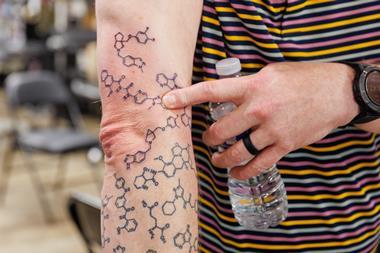Combining know-how from different businesses helped Procter & Gamble win the 2009 RSC Teamwork in innovation award for the development of hair dye product, Perfect 10
Combining know-how from different businesses helped Procter & Gamble win the 2009 RSC Teamwork in innovation award for the development of hair dye product, Perfect 10

A decade ago, before Procter & Gamble expanded its haircare business with the acquisition of Wella and Clairol, the company began to look at hair dye products for the first time. The resulting product - Perfect 10 - is an excellent example of how chemists from different disciplines can work together to create innovative products. In all, maybe 100 people with varying expertise helped create the dye.
Hair dyes range from wash-in/wash-out products to permanent colours, where small molecules enter the hair strands and polymerise, giving colours that remain in the hair. ’This had been done the same way for decades, at a very high pH - above 10 - using a mixture of ammonium hydroxide and hydrogen peroxide, which lightens the hair and also catalyses the polymerisation reactions,’ explains Jon Stonehouse, research fellow at P&G. ’But it smells strongly of ammonia, and also destroys the protective fatty thioester coating on the hairs, which can leave the hair brittle and dull over time.’ The team realised that the ideal product would be less messy, not take half an hour to work effectively, and cause less hair damage. ’We wanted to turn dyeing into more of a beauty experience without losing the performance of the traditional chemistry,’ he says. One of the most important elements was to address the damage by seeing if the dyeing process could be carried out successfully at a lower pH.
P&G encourages its scientists working in similar fields in different businesses to form communities, and one of these is bleaching. ’We often find that the solution to our problem is well-known in another area, and this was no exception - we got the idea to try ammonium carbonate from scientists in our laundry detergents business,’ he explains. ’The carbonate forms a percarbonate when mixed with hydrogen peroxide, which gives bleaching at a lower pH.’
An additional advantage is that the new bleaching species is more selective for melanin - the coloured pigment in hair - than either keratin or the hair coating, which also reduces damage. There was a further danger that damaging radical species could also be formed, and a great deal more research led to the discovery that adding an amino acid such as glycine - referred to as aminoglycine - to the system could prevent this.
The thick of it
However, the new bleaching system created another problem - the high salt content meant it was not compatible with existing formulation recipes. The basis of the formulation is a chassis, which is the composition into which the colour and bleach chemicals are mixed to make a product that can be applied to the hair. ’The final mixture has to have a consistency that is easy to apply,’ says principal scientist Andrei Bureiko. ’Applying home dyes isn’t easy - usually the consumer can only see what’s going on in a mirror and they need the product to be a fairly thick, creamy consistency that flows well out of the nozzle and spreads evenly on the hair, and stays there without dripping. It also needs to be stable on storage for several years.’

The cross-discipline connection here was with chemists who develop hair conditioners. ’Unlike previous hair colourants, this has a high electrolyte level and a high ionic strength because of the ammonium carbonate and the aminoglycine,’ he says. ’Surfactants are usually fairly sensitive to electrolyte content, which makes formulation a challenge.’
By this time, the company had acquired Clairol and Wella, but none of their hair dye chassis were suitable as they tended to form multiphase systems with the new dye mixture. The key to the formulation was the realisation that the answer lay in specially formulated gel networks. ’These form lamellar gels at room temperature, and while they are fairly sensitive to salt levels, this can be used to control rheological properties of the system,’ he says. By working with surfactant supplier Croda, they found that an alkoxy phosphate base could form the desired lamellar gel phase, with very good salt tolerance.
The final stage involved the company’s process chemists, who developed a method of manufacturing the product on a commercial scale in a cost-effective way. After 10 years of development, the product was launched last year in the US and this year in the UK, and Stonehouse says sales are already exceeding expectations. ’Perfect 10 is a great illustration of the power of teamwork,’ he says. ’We worked with more than 10 external collaborators, as well as many people across the company. Without all these internal and external connections the product would not have been possible.’
Sarah Houlton is a freelance writer based in London, UK












No comments yet